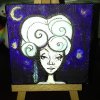 Q & A with Tesoro Carolina
Q & A with Tesoro Carolina
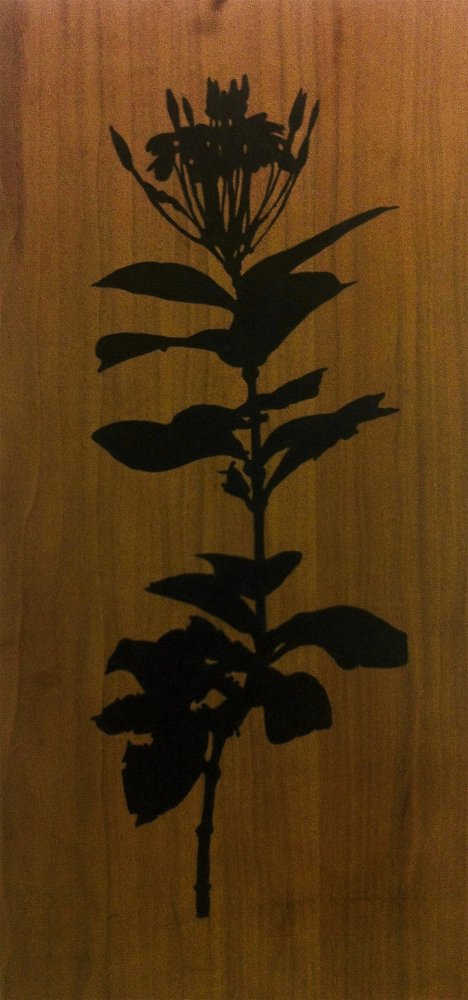
Can you talk a bit about your career to date please
The first show I had was in 1968. There were not many opportunities in Los Angeles, where I was living at the time. From about 1975 until 1989 I was in hiatus, so to speak. I had gone into making clothes, doing fashion design for men and women based on African and Asian styles in construction and also using tie-dye batik. I used natural fibers. In the 70s people wore polyester and I hate that stuff. I was doing the clothing and then I started racing bicycles. I was in Italy when I made the decision to do art again. I was there for six months to work and race bicycles. The reason for my hiatus was racism. I walked into a couple of galleries in California and their attitude was “what the fuck do you want?” I really got rude responses.
If you are getting these kinds of responses from galleries then obviously that is a hard road for a young person. You are spending thousands of dollars for an art education and then have no opportunity. I was always interested in exhibiting in museums because they seemed to be more open to exhibiting a variety of things. In the 70s museums were organized differently from now though. I lived in California for 19 years. I am originally from Ohio. When I came to Florida, I came to visit relatives. I came to visit in Fort Pierce and even though it was backwater compared to San Francisco there was something very nice about the place and I liked it so I decided I was going to move there. I have been in Miami since 1994.
What was the art scene like in Miami in the 90s?
Not very much. There was a little bit going on . I was living in Coconut Grove and I had met a couple of people that were involved in educational community projects. I tried to do my own art practice and I was in the gallery of a Haitian dealer and collector who was here for a short while. Otherwise I did mostly shows in the library system. Galleries did not seem to be interested in the subject of my art practice. A lot of it deals with African-American culture and the African Diaspora in general and there is a relationship to Florida.
That has changed though. Museums and collectors now own your work.
My work is in a few museums now . The Museum of Contemporary Art in North Miami, The Vero Beach Museum of Art and I have work in the collection of the Washington State Arts Commission and a few colleges and private collections.
Do you think the educational aspect of your work deters galleries?
Well, galleries I think are changing but back then racism was involved, I hate to say it. That is part of it. A commercial gallery has to find collectors and you do not see many African American artists in any galleries. I am talking specifically about Miami. I think that my art practice has been pretty much the same but my working methods have changed.
Do you have a preferred medium?
I have a bachelors degree in photography but over the last few years I have been doing less and less photography. I did not really think about it. I did a solo exhibition at the FIU downtown Fort Lauderdale campus. Bonnie Clearwater saw some of the works like the video and she liked those.
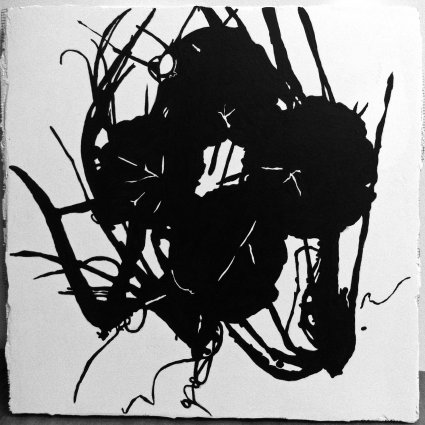
How much video art have you done?
Honestly, not a lot. I did about ten pieces for my solo show but I think only three of them were any good and I was really kind of surprised about the one that MOCA collected . Nobody had really seen any videos of me so there was no way I was able to judge what kind of reaction I was going to get. I had never done any or shown any. Then, all of a sudden, I hear “oh this is great.”
What attracted you to doing video?
I wanted to do video a long time ago and I tried to do some but I really did not have a good camera. Then somebody was saying someone made a feature length film with an iPhone so I said, oh I can use my phone.
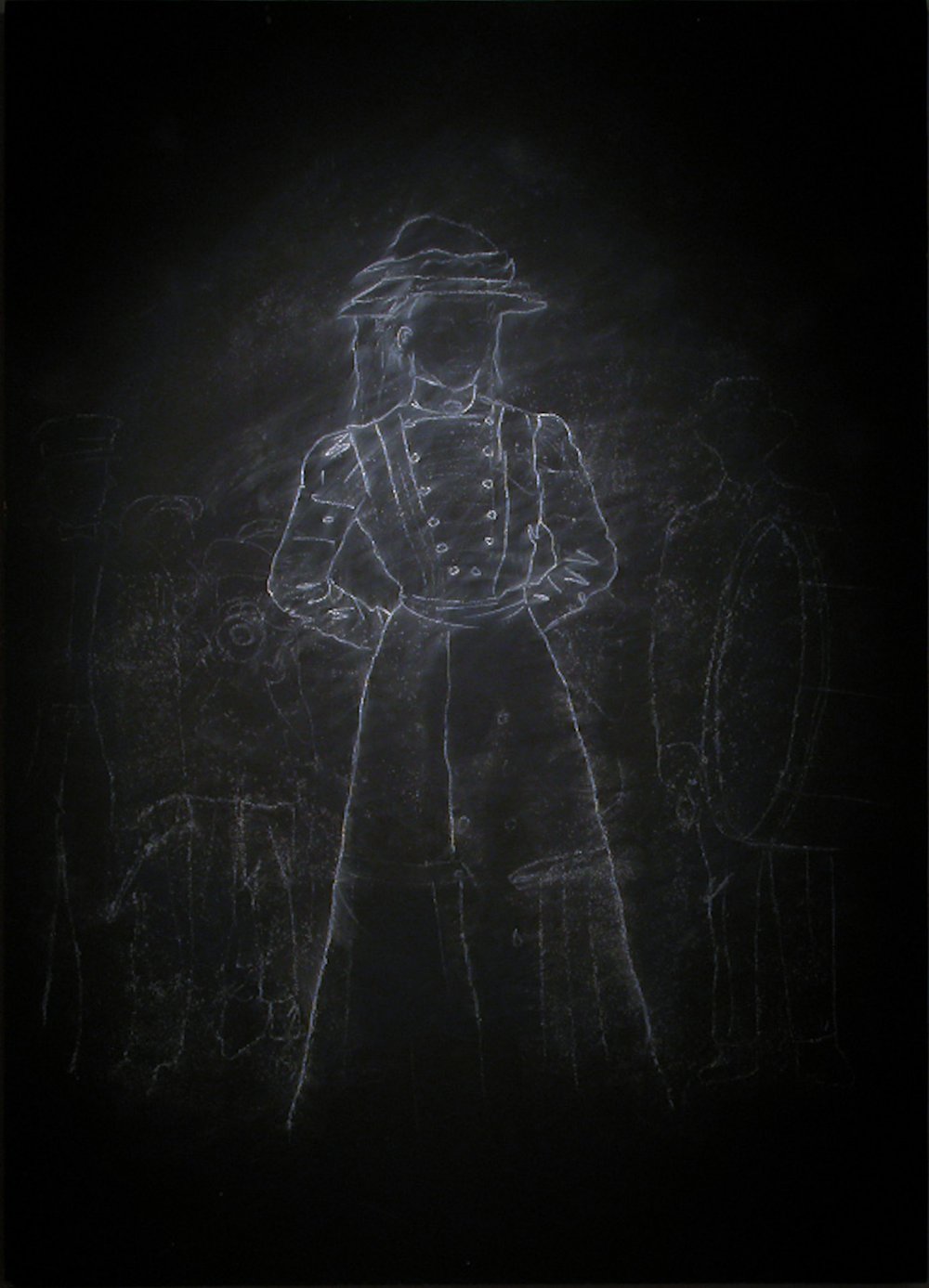
A lot of your work has a historic aspect to it. Can you elaborate?
It used to be just an idea but now, for me, like the video that you saw, Florida is the conjunction where Southern African American, Caribbean and African Diaspora all meet. If you look at the coast line of West Africa it is very similar, with lots of mangroves . It enabled me to rethink the landscape there in a fictional way but also because it is very desolate lots of animals and it is pristine . Now it is getting encroached by buildings on the edges but still you can see areas where there are no buildings. You can still play with ideas.
Was your approach from a standpoint of documenting and researching African Diaspora history in Florida or about Florida in general?
I was thinking more of the Diaspora . Florida has an interesting history. A lot of Africans went to Cuba and Haiti from here and even the Bahamas. In the period of time between Spanish rule and British rule . It was interesting in the sense that people migrated in different ways. My family moved here in the 1920sand Florida had not really been part of the United States for that long. I am thinking about the native population and what kind of interaction would have happened with the native population away from the Euro American communities.
What are you currently working on?
I am still looking into botanicals. Most things are kind of related to herbal medicines and foods but I am doing them in silhouetted shapes so you don’t really know exactly what they are unless you are really familiar with the plants. They just become forms. I also want to continue working with more figurative pieces, which is the reason why I was interested in the Dawoud Bey show. I have been surreptitiously been taking pictures of people on the bus and I use them for a bunch of silhouettes.
You curated a show in the Design District that opened on June 8. Tell me about your initial idea for the group show “Dirt”
William Cordova and I were having a conversation and somehow the conversation turned to dirt and the significance of dirt in various cultures. I was telling him that I had been to Minnesota years ago, around 1999, and had collected dirt and actually shipped some of it back to myself including some bricks from a building that was part of a mineshaft. We went our separate ways and I kept thinking about that conversation and thought that I should curate a show about dirt.
What did you do with the dirt you collected in Minnesota?
Some is in a box and in a milk crate and it is still here. I have not even opened it because I had been back several times and I got more dirt so I have collected dirt several times.
Why did you originally think of collecting it and bringing it back with you?
Because it was beautiful. It is red because of the iron in the soil in Minnesota. It was really fine and I wanted to mix it with some water and use it for painting or something like that. So that was the original idea.
How did you choose the artists for “Dirt?”
I had a gallery in Wynwood and I still have the website so I was using that as a curatorial project, called ArtLab 33 so I sent out a call through that website and there are four artists in the show from that call. David Rohn and Alette Simmons I have known for some time. The other people, I asked. Edouard Duval Carrié, he works with bacteria. He has used microscope images of bacteria. The two photographers from Arizona I met online many years ago. Kim Nicolini I have known so I asked her.
What concept did you give them?
I just gave them a little paragraph when I did the call. Any and all concepts about dirt. Even though there is a lot of literal dirt here. When I was doing the research, this goes back to the title of the show, I saw that in the Philippines for instance there is a whole culture around dirt. Especially women use dirt as pigment for tie-dye pieces. In Haiti people were eating dirt, pregnant women were eating dirt for the nutritional value it provides and women in the Southern United States as well. I remember my family talking about that a long time ago. It wasn’t about the literal. It’s like Robert Chambers talking about the one grain or one little spec of dirt transformed into a solid block of marble.
Can you tell me the meaning of your name?
I legally changed my name in the 70s. My brother had a friend who was a Nigerian boxer by the name of Sugar Ray Adegun, who was one of the African champion boxers. He gave me that name. It means “The Artist Returns.”
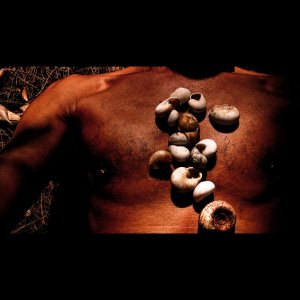
 Heike Dempster
Heike Dempster